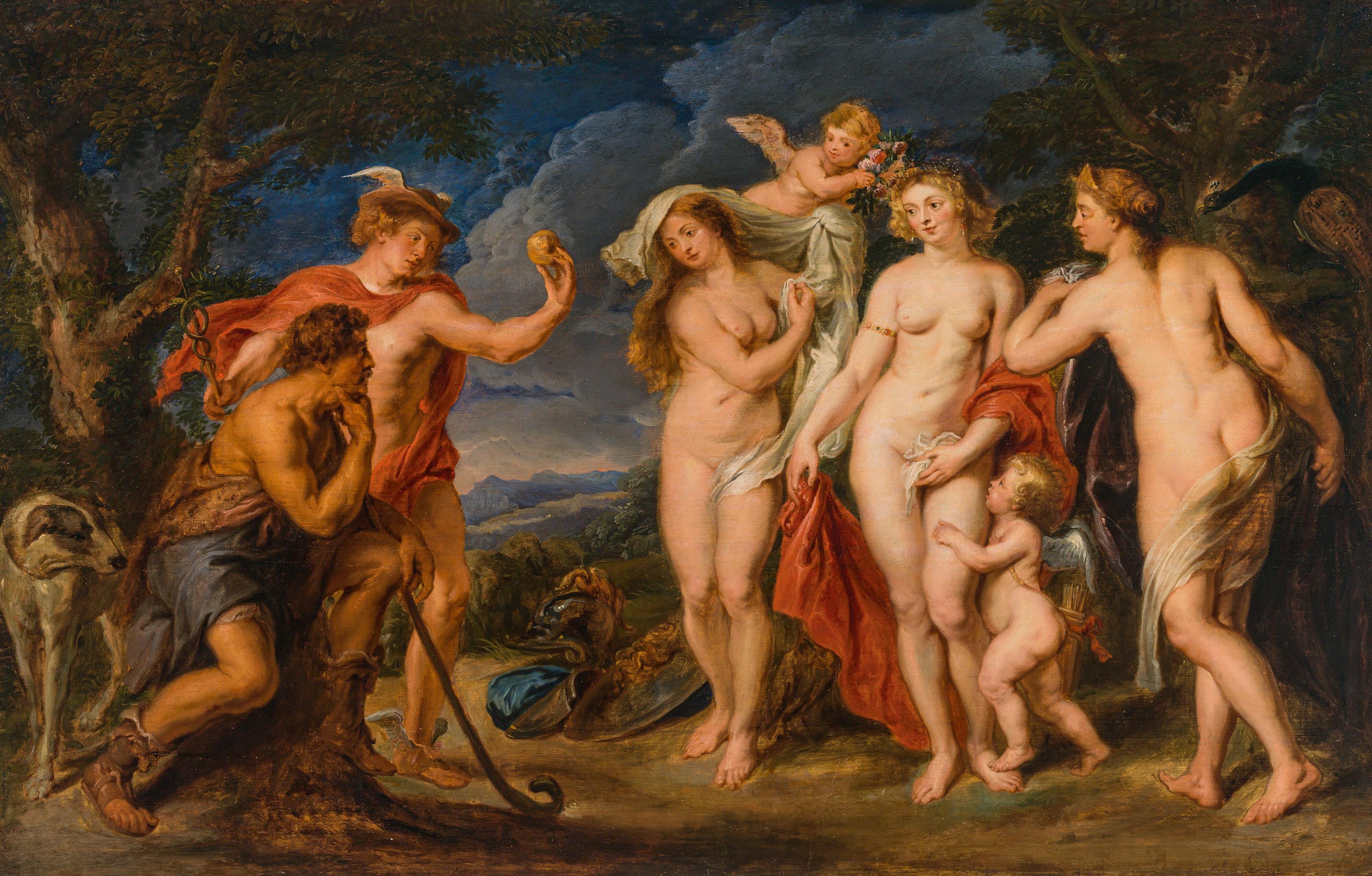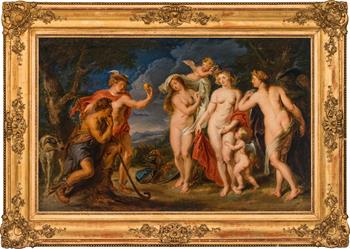1024
Circle of Peter Paul Rubens
(Siegen 1577 - 1640 Antwerpen)
„The Judgement of Paris“
oil on panel, mounted onto a wooden panel; framed
71.5 x 111.5 cm
Provenance
private collection, Vienna
Scientific documentation and pigment analysis by Prof. Dr. Manfred Schreiner, Vienna, August 2023.
Estimate: € 50.000 - 100.000
Auction is closed.
The story of the shepherd Paris, who is to judge the beauty of the three goddesses Venus, Juno and Minerva, is undoubtedly one of the best-known classical myths. We see Mercury holding the coveted apple that is to choose the winner. Paris has already set his eyes on Venus, who promises to reward him with the love of the most beautiful mortal woman - Helen, wife of King Menelaus of Sparta. This decision eventually leads to the abduction of Helena by Paris, the attempts of the Greeks to recapture her and the siege and eventual destruction of Troy - the epic story told in Homer's Iliad.
In the course of his long and illustrious career, Peter Paul Rubens was to turn to the subject at least eight times. Some of these works are known today only through copies, but the pictorial language of the entire group bears witness to his unusual and highly individual interpretation of the tale. His preoccupation with the subject spanned his entire career, from his early beginnings in Antwerp to the year before his death in 1640 - as a result, these works offer unparalleled insights into his development as an artist over a period of forty years. Two authoritative examples of these constantly varied compositions are in the collection of the National Gallery London, which acquired the earliest known version in 1966 (inv. no. NG6379), painted around 1597-99, when Rubens was just over 20 years old. Even in this early interpretation, inspired by a copper engraving by Raphael, there are elements that show a closeness to the present depiction, such as the back figure of Juno and the putto clinging to Venus's thigh. The so-called "late London judgement", datable to between 1632-35 (National Gallery, London, inv. no. NG194) is very close to the present work in its composition, but the sides of the protagonists are reversed, and the three goddesses are positioned differently.
The scene offered the artist the opportunity to explore his ideal of female beauty in detail. Due to the high demand, there are numerous repetitions and variations from Rubens' workshop and its circle.
The present painting corresponds to the last, and probably most popular, version from 1638, which was commissioned by Philip IV of Spain and is now in the Museo del Prado, Madrid (inv. no. P001669). However, small deviations in the details and a spatial concentration of the content can be recognised compared to the extreme horizontal format of the monumental Prado work. The overall composition focuses on the key figures of the story: the group of three undressed goddesses on the right-hand side of the picture, Mercury on the left behind Paris, who is seated in a pensive posture. This particularly attractive composition was the subject of great interest immediately after its creation. The king's brother, Cardinal-Infant Don Fernando de Austria, the governor of the southern Netherlands, wrote about it in several letters. He considered it one of Rubens' best works but was concerned about the nudity of the three women. In addition, the depiction of Venus is said to be based on Rubens' second wife, Hélène Fourment, whose beauty repeatedly inspired him in his masterful formulation of female nudes.


